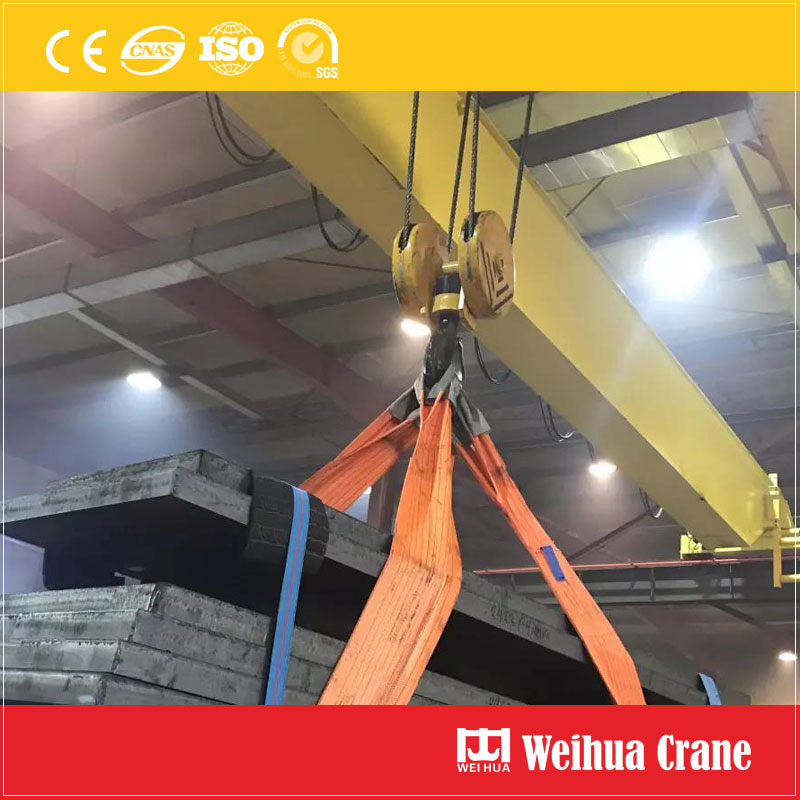Kraan haak rigging -technieken
2025-08-19
The crane itself might be the star of the show, towering over the site, but the crane hook rigging is the critical link between its power and your load. Get this part wrong, and even the mightiest crane becomes a liability. Mastering hook rigging techniques isn’t just about getting the job done; it’s about doing it safely, efficiently, and protecting personnel, apparatuur, en de lading zelf.

Why Rigging Technique is Paramount
A kraanhaak is more than just a curved piece of steel. It’s a precisely engineered component designed for specific forces. Improper rigging can lead to:
- 1. Catastrophic Failure: Overloading, side-loading, or point loading on the hook tip can cause it to bend, crack, or even snap.
- 2. Load Instability: Incorrect sling angles or center of gravity (CG) placement cause loads to swing, tilt, or slip unexpectedly.
- 3. Sling Damage: Abrasion, pinching, or overloading slings against the hook’s sharp edges or saddle.
- 4. Accidents & Injuries: Dropped loads, swinging objects, and rigging failures pose severe risks to workers.

Essential Crane Hook Rigging Techniques
-
1. Know Your Hook & Its Capacity:
- Read the Markings: Every certified hook has its rated capacity (WLL – Working Load Limit) stamped on it. NEVER EXCEED THIS LIMIT. Know if it’s a “Deep Throat” hook for wider loads.
- Identify the Saddle: The saddle (the curved inner surface near the base of the hook throat) is the ONLY place the load-bearing part of a sling (choker, eye, master link) should rest. Placing it on the point or back of the hook drastically reduces capacity and risks slippage.
- Understand Hook Types: Standard hooks, draaibare kraanhaken, Ramshorn Crane Hook, sorting hooks – each has specific applications and limitations. Use the right tool for the job.
-
2. Proper Sling Placement is Non-Negotiable:
- Always Seat in the Saddle: This ensures the load force is directed straight down the shank of the hook, its strongest axis. Ensure slings, boeien, or master links are centered and seated firmly.
- Avoid Point Loading: Never let the load bear directly on the hook point. This creates immense stress concentration and can bend or break the tip.
- Prevent Side-Loading: Ensure the load hangs vertically below the hook. Forces pulling sideways on the hook can bend the shank or throat. Use swivel hooks if load rotation is necessary.
-
3. Mastering Sling Configurations on the Hook:
- Single Leg: Eenvoudig, but ensure the load is balanced and the sling eye/seizing is securely seated in the saddle.
- Multi-Leg Slings: When using multiple slings connected to one hook:
- Use a Master Link (Ring) or Shackle: This is the correct and safest way. Connect all sling legs to the master link/shackle, then connect the master link/shackle to the crane hook, seated firmly in the saddle.
- Avoid “Cradling” Multiple Slings: Never drape multiple sling eyes or legs directly over the hook itself without a master link. They can bunch up, pinch, slip off the saddle, or overload one side of the hook. This is a major cause of hook failure.
- “Basket Hitch” on the Hook: While a basket hitch can be formed by passing a sling through the hook and connecting both ends to the load, extreme caution is needed. The hook essentially becomes part of the sling configuration. Ensure the hook capacity is sufficient for the doubled sling capacity and that the sling legs are correctly angled. Using a master link is generally preferred and safer.
-
4. Understanding Sling Angles & Trigonometry:
- The angle between the sling leg and the horizontal significantly impacts the actual force on the hook and slings. As the angle decreases (sling legs become flatter), the tension increases exponentially.
- Rule of Thumb: A 60° angle (from horizontal) creates roughly 115% of the load weight in tension per leg. A 30° angle creates nearly 200% per leg! Always calculate the load on the hook based on the sling angles used.
-
5. Rigging Hardware Compatibility:
-
Shackles used below the hook must be properly sized and rated. The shackle pin diameter must fit freely within the hook saddle without forcing or binding.
-
Ensure any master links are rated for the total load and compatible with the hook size and shape.
-
6. The Critical Role of Inspection (Voorgebruik & Periodiek):
- Before EVERY Lift: Inspecteer de haak visueel:
- Vervorming: Enige buiging, draaien, or stretching? Discard immediately.
- Dragen: Check the saddle and point. Significant wear reduces capacity.
- Scheuren: Magnaflux or dye-penetrant testing is needed for thorough checks, but look for obvious cracks, especially near the tip or shank.
- Klikken (indien uitgerust): Ensure it functions correctly and isn’t damaged or sprung. Latches prevent “unreeving” but are not load-bearing.
- Corrosie & Pitten: Excessive corrosion weakens the hook.
- Regular Formal Inspections: Follow ASME B30.10 (Haken) and company policy for documented inspections by qualified personnel.

Golden Rules of Crane Hook Rigging Safety
- 1. Seat the Load in the Saddle: Always. No exceptions.
- 2. Know the Hook’s WLL: Raad het nooit; always verify the stamping.
- 3. Use Master Links for Multi-Leg Slings: Avoid cradling slings directly on the hook.
- 4. Calculate Sling Angles: Understand the real forces involved.
- 5. Inspect Relentlessly: A damaged hook is a ticking time bomb.
- 6. Communicate: Ensure clear signals between the operator and riggers.
- 7. Plan the Lift: Consider the load CG, path, and potential hazards.
- 8. Qualified Personnel Only: Rigging is a skilled trade requiring training.


Crane hook rigging is a fundamental skill demanding knowledge, precisie, and unwavering attention to safety. By respecting the hook’s limitations, adhering to proper seating techniques (especially using master links for multiple slings), understanding load dynamics, and performing rigorous inspections, you transform that simple piece of forged steel into the reliable, safe connection point that every successful lift depends on. Never underestimate the power of getting the rigging right – it’s the silent guardian of every lift. Stay safe, rig smart!







Laatste opmerkingen